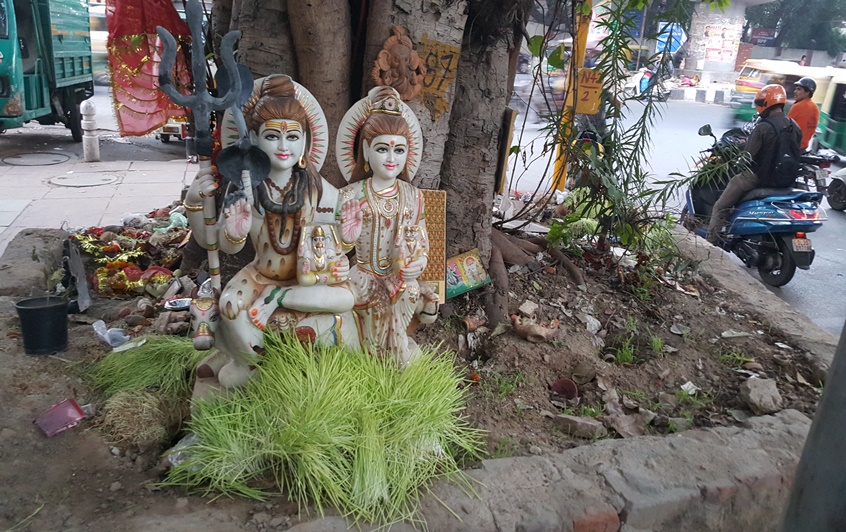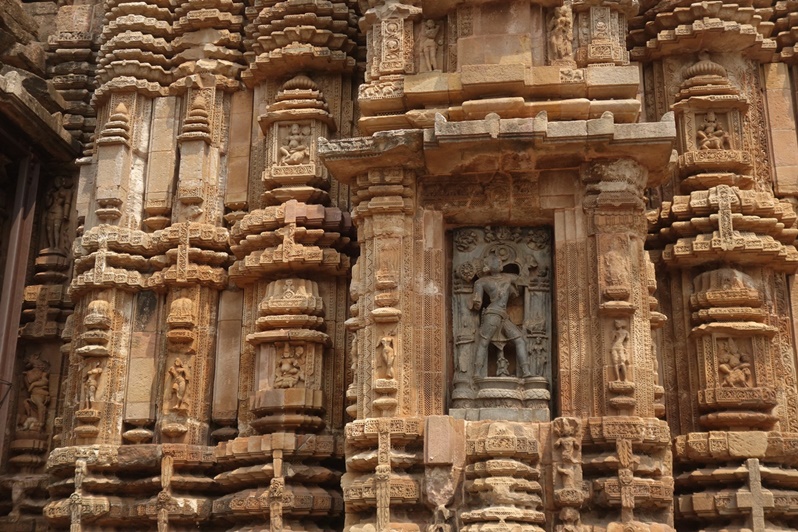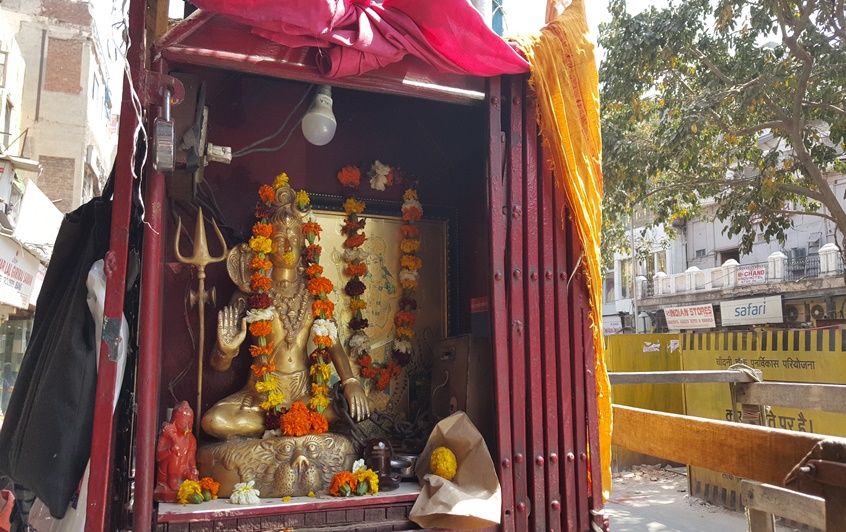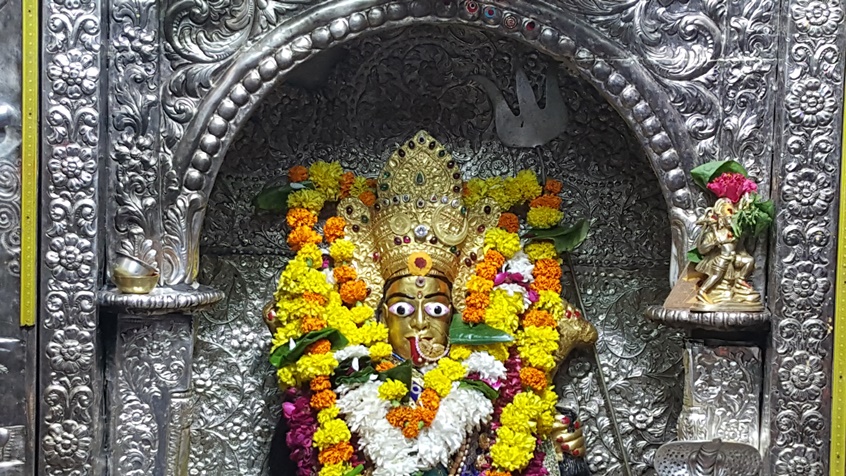
par Bertrand Bellaize, le 22 mai 2020
Art indien : les attributs des dieux hindous dans les statues indiennes 3
Dernière partie...
Lotus
Padma symbolise la pureté, la beauté, la perfection. Il est le sein maternel, la matrice d'où viennent toutes choses. C'est le siège du principe féminin, la Shakti.
Le lotus donne une fleur de toute beauté, alors qu'il provient d'un environnement marécageux, obscur, repoussant : il représente donc la possibilité de transformation, d'élévation.
C'est ainsi le trône des dieux dont ils sont issus.
Chaque partie de la plante a sa propre signification et les lotus de différentes couleurs soulignent, dans l'iconographie picturale, différentes qualités : rose ; le soleil, blanc ; la pureté ...
Lune en croissant
Chandra, signe universel lié aux cycles, aux saisons, à la fertilité, au temps.
La lune est aussi la coupe qui contient Soma, la liqueur d'immortalité. On la trouve chez Shiva, Ganesh ...
Miroir
Darpana souligne le vide : le miroir est un témoin neutre, il reflète tout mais ne s'identifie à rien. Sa neutralité est totale : il ne juge pas, ne compare pas, ne dénigre pas et ne saisit pas ce qui lui est présenté : c'est un formidable symbole de la pure conscience.
Il peut aussi exprimer, plus concrètement, l'attachement à ce qui est irréel, à savoir le reflet, la surface des choses (qui est donc illusoire (Maya) dans le sens où ce n'est qu'une réalité apparente tel un mirage): le manifesté par opposition à l'absolu qui est l'essence de la réalité.
Le miroir porté par certaines déesses, notamment Durga, peut illustrer la vanité des choses, l’éphémère de l'existence. C'est alors aussi un symbole lunaire.
Noeud coulant, lacet
Pâsha est utilisé pour capturer les démons, représentant l’ignorance, les fausses croyances, les poisons qui nous habitent. Le lacet peut aussi illustrer les liens, l’attachement.
Nourriture
Modaka, la plupart du temps, ce sont des fruits ou des sucreries (le Laddhu, très présent chez Ganesh, est un dessert particulièrement apprécié en Inde) qui marquent à la fois la nourriture physique, l’abondance mais surtout les nourritures spirituelles nécessaires au disciple.
Les Gurus et les disciples font très souvent offrandes de sucreries : c’est aussi une manière d’apporter de la douceur, une forme de réconfort à toutes les personnes en souffrance. Il n’est pas rare qu’au moment des salutations de départ, le Guru offre des bonbons aux fidèles venus le voir.
Parasol
Chattra, symbole de royauté, illustre la protection des divinités.
Plume de Paon
Mayura-piccha figure l’immortalité toute comme le paon lui même.
Pot à eau
Kamandalu indique la fertilité liée à l’eau : il est représenté avec les divinités des eaux mais également chez celles symbolisant l’ascétisme : il fait partie des attributs des sannyasins, ascètes itinérants.
Soc de charrue
Hala, la terre, l’agriculture et par là la maîtrise de la nature (dans le sens forces instinctives sous-jacentes).
Vase
Kalasha : abondance – sagesse - immortalité
Les attributs des statues : un facteur de rappel quotidien
Les attributs qui accompagnent les divinités nous fournissent de nombreuses informations très précieuses : elles sont sont là pour aider le disciple lors de son cheminement et servent de facteurs de rappel constant. Si le disciple est attentif lors de ses rituels quotidiens, l’image de son Ishta Devata (sa divinité d’élection) va sans cesse lui fournir matière à pratique, lui remémorer les enseignements essentiels de sa voie spirituelle.
Les attributs (ainsi que l’ensemble de la statue : postures, mudras, habillements, montures…) donnent des indications à différents niveaux :
- Rappel de la primauté de l’absolu sur la forme manifestée : le lotus, la conque, le lingam, le chakra.
- Explication des grandes lois de l’univers : loi du changement/ de l’impermanence, loi des 3 gunas travers des symboles tel le trident, …
- Présentation des qualités nécessaires au disciple, incarnées par les pouvoirs des divinités : courage, bienveillante, don, persévérance, connaissance… sous une forme d’exemplarité et d’encouragement.
- Vision des nombreux obstacles à surmonter : illusion ou ignorance, attachement (aux croyances, aux désirs, aux biens matériels…..), aveuglement….
- Expression des moyens utiles à travers les armes, du livre, de la nourriture, du feu….
La tradition hindoue à travers les images, les sculptures et grands récits épiques des divinités fonctionnent par allégories. Les combats y figurent en bonne place, notamment dans le Ramayana permettant de mettre en avant de nombreuses qualités nécessaires au quotidien (courage, bravoure, fidélité, service, persévérance….) mais le plus important, c’est le message transmis au disciple. La Sadhana (le chemin spirituel) est difficile, longue, semée d’embûches : l’éveil est possible mais il demande beaucoup d’efforts, de persévérance et de qualités : les statues sont une des aides (avec l’enseignement du Guru, les rituels….) mises à la disposition du Sadhaka.
Sources
The Book of Hindu Imagery: Gods, Manifestations and Their Meaning : Eva Rudy Janssen
Un et multiple : Sarah Combe
Mythes et dieux de l’Inde : Alain Danielou


